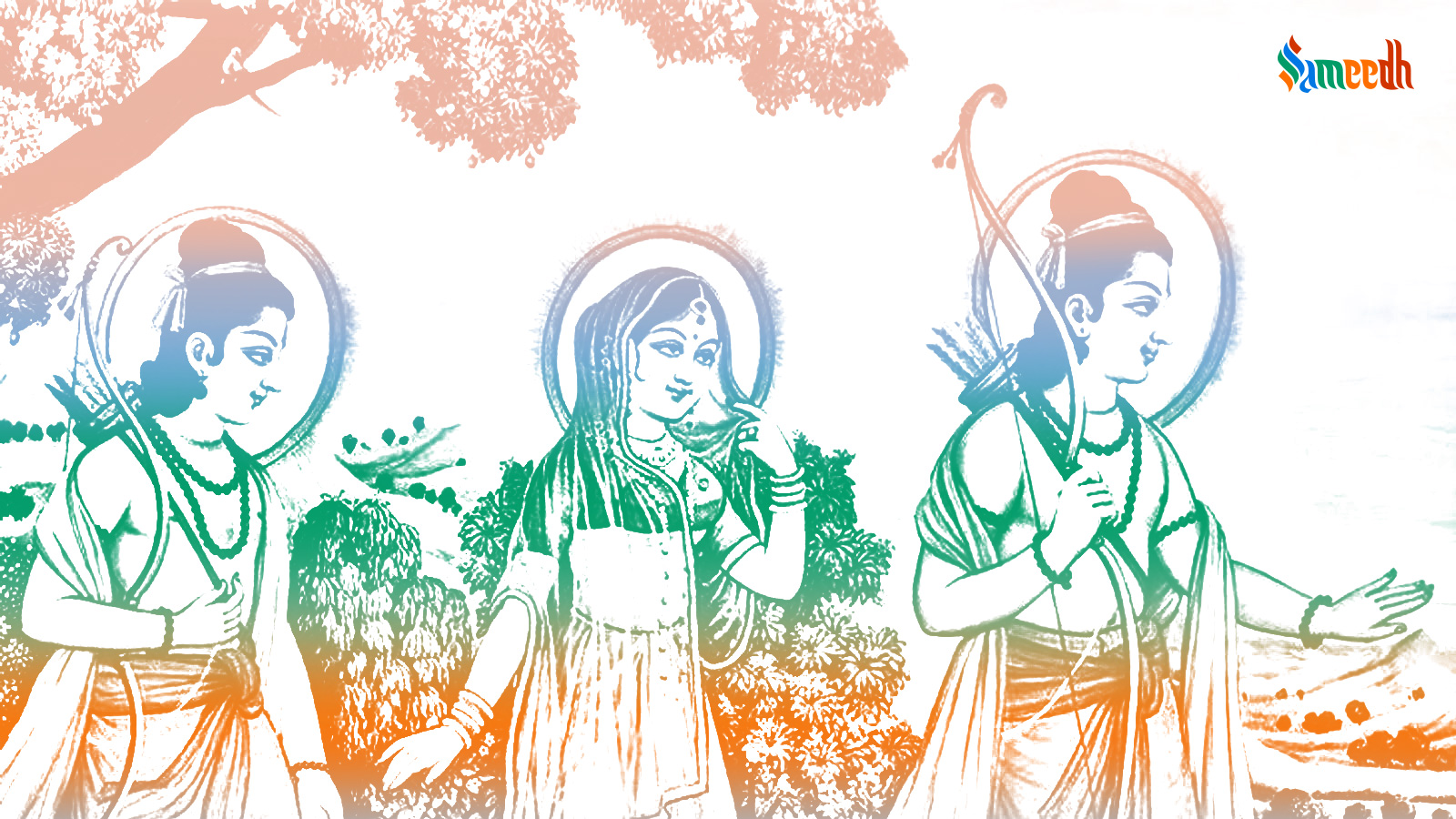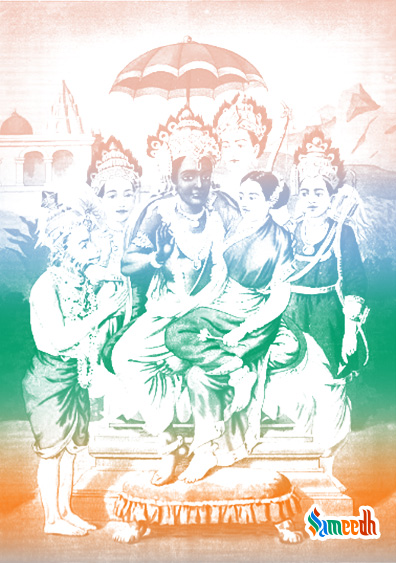This Epic tells the story of the Prince of Ayodhya, Lord Ram, the seventh incarnation of Lord Vishnu.

Ram, Sita and Laxman during their exile
Ramayan literally translates as “The Story Of Ram.” He is also known as “Maryada Purshottam”, or the upholder of Dharma – an ideal man who waged a war against the ten-headed demon Raavan to free his wife Sita from under his tyranny. Written by Sage Valkimi in the years between 500 and 300 BCE, the epic table of Ramayan is thousands of years old, and still to this day acts as a guidebook for young and old alike. Ramayan is full of stories, each one of which holds a valuable lesson within it. When children are young, telling them stories from this ancient epic will give them a direction and meaning in life.
Where It All Began
The story begins with King Dashrat and his three wives, who had four sons amongst them. Lord Ram being the eldest, was named the Crown Prince of Ayodhya. Unacceptable to Kaikey, his step mother (who wanted her son Bharat to sit on the throne), forced Dashrat to punish Ram into an exile of 14 long years. Sita and Laxman, devoted as they were, decided to follow him into the forest. And here began the story of how Raavan deceived Sita in order to avenge his sister (who tried to seduce Laxman and got rejection in return) and lured her out of her house under the pretext of a golden deer, only to kidnap her and take her back to Lanka, where he decided he would marry her.
The Journey & The Battle
When Ram finds out the truth, he sets himself on the course to Lanka, with Laxman and an army of monkeys (Vanar Sena) on his back. During his journey, he meets many animals and people alike, like Shabri, Jatayu, Sugriv and more. One of his most trusted advisers and followers was Hanuman, Son of the God of Wind (Vayu), and a member of the Vanar Sena who was blessed with divine powers from the Gods above. It is said that Ravaan lost most of his army and brothers during the battle. One of them was Vibhishan, who decided to walk the path of truth and joined hands with Ram. Eventually, the final took place between Ram and Ravaan on the 13th day of the battle, wherein Ram defeated Ravaan and his ten heads by slicing him from his torso. After the battle, Sita was asked to undergo a purity test, during which she walked through fire and emerged unscathed. After this victorious win, Ram and Sita returned to Ayodhya to resume their rightful place as King and Queen on a flying lotus, or a “pushpak viman.”

Ram and Sita with Laxman, Bharat, Shatrugna and Hanuman; Image Source: Google Arts & Culture
Cultural Significance
Other than it being the very root upon which we have drawn the guidelines of what an ideal behavior should look like, it also holds the age-old message of the triumph of good over evil. The Ramayan is an endless source of wisdom for mankind on how to live a life that serves society. Every character in Ramayan had a role to play. Here is an epic that teaches you how to live your life, morally like Ram, selflessly and with virtue like Sita, with devotion like Hanuman and loyally like Laxman. Ramayan is celebrated in many parts of the country annually. Be it the birth of Lord Ram, celebrated as Ram Navmi, or the burning of Ravaan during Dussehra, Ramayan holds a very important part both in Indian history as well as its culture.